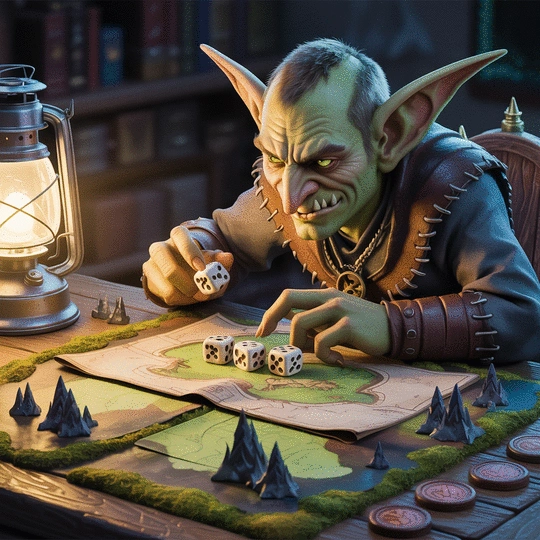Understanding Goblin Society in Games
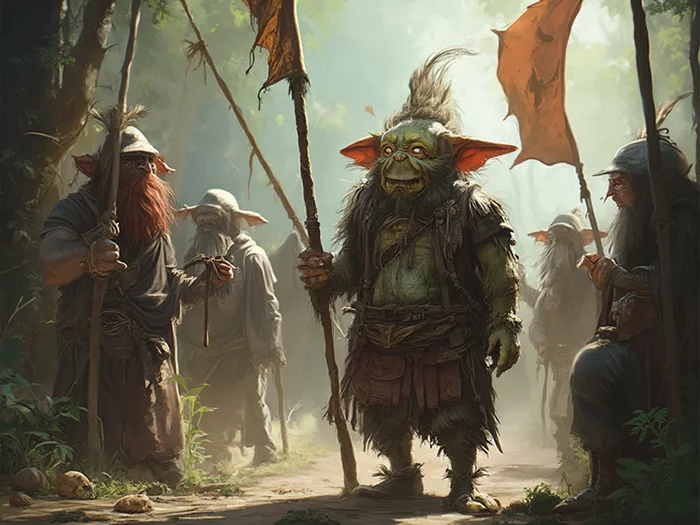
Posted on: 2025-10-13
By: Lorian Fableweaver
What if the most mischievous characters in your RPGs could become the most compelling? Exploring goblin society reveals layers of culture and dynamics that can enhance your gameplay experience. This journey into the world of goblins offers a treasure trove of insights for both players and dungeon masters alike!
What You Will Learn
- Goblins thrive on unity and resourcefulness, with cultural traits that enhance team dynamics in gameplay.
- Understanding goblin lore adds depth to character creation and enriches storytelling possibilities.
- Different goblin subtypes, like forest and cave goblins, bring unique traits that can affect strategies in your campaigns.
- The tribal structures and leadership dynamics within goblin clans can create intriguing conflicts and power struggles in your game narratives.
- Alliances and rivalries among goblin clans influence gameplay and player choices, offering various pathways to explore in adventures.
Goblin Social Dynamics: Roles & Influences
Understanding goblin society requires an exploration of their internal hierarchies and external influences. This visual breaks down key leadership roles and the impact of other races on their tribal structures.
Understanding Goblin Society in Fantasy Games
Welcome, fellow adventurers! Today, we’re diving into the intricate world of goblin society in fantasy games. Have you ever wondered what makes goblins tick? Understanding their culture is key to enhancing your gameplay experience, whether you’re a player or a dungeon master! From their quirky traditions to their unique social structures, we’ll explore all the fascinating facets of goblin life.
What Defines Goblin Culture in RPGs?
At the heart of every goblin is a rich tapestry of culture that influences their actions and interactions. Goblin culture is often characterized by a deep connection to nature and a penchant for mischief. They value resourcefulness and community, which often leads to creative problem-solving in dire situations. Each goblin tribe may have its own customs, but certain themes persist across different RPG settings, as highlighted in this academic report on goblin threats. These cultural nuances are often incorporated into games developed by studios like Goblin Games.
- Unity in Chaos: Goblins often thrive in groups, relying on teamwork to navigate challenges.
- Shiny Loot: A love for treasure and shiny objects drives many of their actions.
- Rituals and Traditions: Unique rituals can mark milestones in a goblin's life, reinforcing their communal bonds.
These cultural traits not only make goblins entertaining to play but also provide depth to their roles in your campaigns. Embracing these characteristics can lead to unexpectedly delightful moments during gameplay!
The Role of Lore in Shaping Goblin Identities
Lore plays a pivotal role in defining who goblins are in various gaming worlds. Their backstories often include tales of their origins, values, and motivations. For instance, many goblins are depicted as misunderstood creatures, often viewed as villains when they might just be trying to survive. Understanding this lore helps players create more nuanced characters and scenarios.
- Legends and Myths: Stories that shape their identity can vary widely between games.
- Creative Freedom: Incorporating lore allows for unique interpretations and homebrew stats.
- Guiding Principles: Common themes in goblin lore emphasize survival, cunning, and resilience.
By tapping into the rich lore surrounding goblins, you can enhance your storytelling and create engaging narratives that resonate with players!
Exploring Goblin Subtypes: Variations Across Fantasy Worlds
Not all goblins are created equal! Across different fantasy games, we see a delightful variety of goblin subtypes, each with unique traits and behaviors. From the sneaky forest goblins to the fierce mountain goblins, these variations add richness to your gaming experience.
- Forest Goblins: Masters of stealth, these goblins are often found hiding in trees and using their surroundings to their advantage.
- Cave Goblins: Preferring underground lairs, they are known for their cunning traps and ambush tactics.
- Hobgoblins: A sub-type that exhibits a more militaristic approach, leading packs with discipline and strategy.
Understanding these subtypes not only enriches your own gameplay but also provides options for expanding your campaigns. So, which goblin subtype has been your favorite to encounter or role-play? Let's dig deeper into the next sections!
Pro Tip
To truly bring goblin characters to life in your campaigns, consider developing a unique backstory for each tribe or subtype you introduce. This allows players to connect emotionally with the goblins they encounter, turning what might be a simple encounter into a memorable adventure filled with depth and personality!
Tribal Structure and Leadership Dynamics
Understanding the tribal structure of goblins is key to grasping their social dynamics. Each clan has its unique hierarchy, which influences everything from decision-making to resource allocation. At Goblin Society Games, we love exploring how these hierarchies shape goblin interactions and gameplay. So, let’s dig in!
Exploring Goblin Hierarchies: Who Leads the Clans?
In goblin tribes, leadership often falls to the strongest or the most cunning individuals, typically the chieftain. The titles and roles may vary, but the core idea is the same: a leader must prove their worth to command respect. Here’s a brief overview of common leadership roles within goblin clans:
- Chieftain: The primary leader who makes major decisions.
- Shamans: Spiritual figures who guide the tribe’s beliefs and practices.
- War Leaders: Responsible for strategizing and leading raids.
- Scouts: Keep watch for threats and gather information.
These roles can lead to complex interactions among goblins, especially when it comes to leadership challenges or shifts in power. Have you ever had your players face off against a cunning goblin chieftain? It’s a fantastic way to create tension!
The Influence of Hobgoblins and Bugbears on Goblin Tribes
Hobgoblins and bugbears often play significant roles within goblin societies, either as allies or adversaries. Their strength and tactical prowess can elevate a goblin tribe or pose a serious threat. Let’s examine how they impact goblin dynamics:
- Hobgoblins: Typically more disciplined, they can help organize goblin tribes into formidable forces.
- Bugbears: Their brute strength can intimidate rival clans or enforce compliance among goblins.
- Alliances: Strategic partnerships can form, leading to powerful coalitions.
This interplay can create rich narratives in your campaigns. Imagine a scenario where a goblin tribe must choose between following a hobgoblin leader or resisting him! The choices players make can lead to exciting twists in the story.
Power Struggles within Goblin Factions
As with any society, power struggles are common within goblin factions. These conflicts often arise from ambition, betrayal, or external pressures. Here are some key aspects of these power dynamics:
- Clashes over resources—goblins are notorious for squabbling over shiny trinkets!
- Challenges to leadership can lead to dramatic confrontations.
- Alliances can shift quickly based on perceived weaknesses.
Incorporating these elements into your games can provide players with engaging storylines. Have your goblin NPCs ever turned on each other? These moments can add layers of complexity to the adventure!
Understanding Tribalism and Alliances Among Goblin Clans
Tribalism plays a crucial role in goblin society. Each clan has its own identity and customs, which often dictate its alliances and rivalries. Here are some insights into these relationships:
- Shared Goals: Clans may ally for specific purposes, such as raiding or defending against common threats.
- Rivalries: Historical grievances can fuel ongoing conflicts that affect gameplay.
- Trade Agreements: Goblin clans may engage in resource exchanges, leading to intriguing collaborations.
These tribal dynamics can create immersive experiences for your players. When designing an adventure, think about how these alliances can change based on player actions. Will they broker peace or spark a war? The possibilities are endless!
Frequently Asked Questions About Goblin Society in RPGs
Here are some common questions about goblin society to help deepen your understanding and enhance your gameplay.
- Q: What defines goblin culture in RPGs?
- A: Goblin culture is often characterized by resourcefulness, a deep connection to nature, mischief, a love for shiny objects, and strong communal bonds reinforced by unique rituals and traditions.
- Q: How does understanding goblin lore improve gameplay?
- A: Understanding goblin lore provides depth to character creation, enriches storytelling, and allows for more nuanced scenarios, presenting goblins as more than just simple villains.
- Q: What are some common goblin subtypes and their characteristics?
- A: Common subtypes include Forest Goblins (masters of stealth), Cave Goblins (known for cunning traps), and Hobgoblins (militaristic and disciplined). Each subtype brings unique traits and behaviors to campaigns.
- Q: Who typically leads goblin clans?
- A: Leadership often falls to the strongest or most cunning individuals, with roles such as Chieftains (primary decision-makers), Shamans (spiritual guides), War Leaders (raid strategists), and Scouts (information gatherers).
- Q: How do Hobgoblins and Bugbears influence goblin tribes?
- A: Hobgoblins often impose discipline and strategy, while Bugbears contribute brute strength and intimidation. They can form alliances with goblin tribes, elevating their power, or act as adversaries, creating complex narrative challenges.
Recap of Key Points
Here is a quick recap of the important points discussed in the article:
- Unity in Chaos: Goblins thrive in groups, relying on teamwork for survival and success.
- Resourceful and Mischievous: Their culture values creativity and problem-solving, often leading to unexpected outcomes in gameplay.
- Rich Lore: Understanding goblin lore enriches character development and storytelling, allowing for deeper engagement.
- Diverse Subtypes: Various goblin subtypes, such as forest and cave goblins, offer unique traits that enhance gameplay variety.
- Complex Hierarchies: Leadership roles within goblin tribes shape social dynamics and create opportunities for conflict and intrigue.
- Tribal Alliances: Goblin clans form alliances and rivalries based on shared goals and historical grievances, influencing campaign narratives.
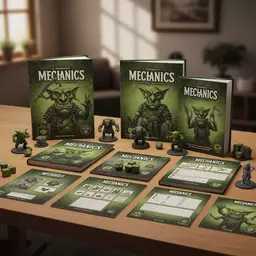 Curious about how the quirky mechanics of goblins can elevate your gaming experience? Unleash the fu
Curious about how the quirky mechanics of goblins can elevate your gaming experience? Unleash the fu
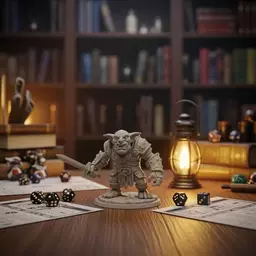 As you embark on your homebrew journey, the balance of goblin stats can make or break your gaming ex
As you embark on your homebrew journey, the balance of goblin stats can make or break your gaming ex
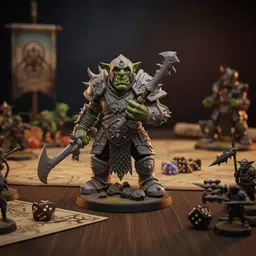 Have you ever considered how the smallest creatures can wield the greatest potential? When it comes
Have you ever considered how the smallest creatures can wield the greatest potential? When it comes
